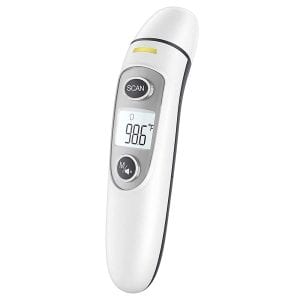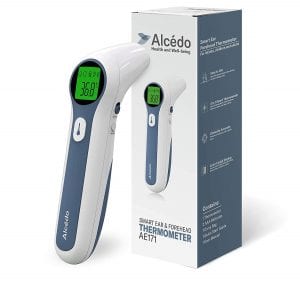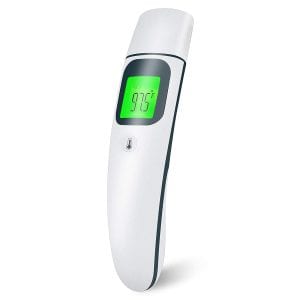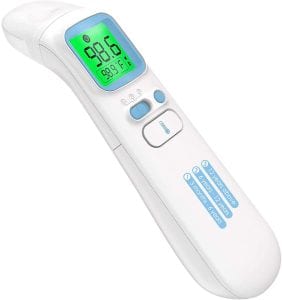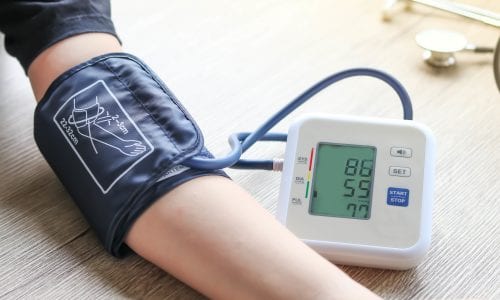The Best Ear Thermometer
We looked at the top 4 Ear Thermometers and dug through the reviews from 25 of the most popular review sites including and more. The result is a ranking of the best Ear Thermometers.

Our Review Process
Don't Waste Your Money is focused on helping you make the best purchasing decision. Our team of experts spends hundreds of hours analyzing, testing, and researching products so you don't have to. Learn more.
Our Picks For The Top Ear Thermometers
Get the most reliable readings with the pediatrician-recommended thermometer. It has a smart chip with an optimized algorithm. The thermometer can store up to 35 temperature readings.
Pediatrician RecommendedThis thermometer has three ultra-sensitive sensors to deliver reliable readings.
This thermometer can be used on adults, children and objects. It can store up to 20 readings and provide color-coded results. The one-push button design allows for instant readings.
Four Measurement ModesThis thermometer has adult forehead mode, child forehead mode, ear mode and object mode.
This ear thermometer is perfect for adults, children and elders. It is backed by clinical studies to ensure excellent performance and accurate results. It only takes one second to provide a temperature reading.
Ideal for All AgesGet accurate temperature readings for adults, children and elders.
You can set age group modes within the thermometer to get the most accurate readings. The results are color coded for easy interpretation. The thermometer can store up to 40 temperature readings.
Accurate Readings By AgeThe thermometer has three different age group modes for the best readings.
Buying Guide
If you or a loved one is feeling unwell, one of the first things to do is to check the temperature. This helps you determine whether you have a fever, how high it is and whether you need to see a doctor. The temperature can be taken with a thermometer in a number of different ways: rectally, orally, in the ear and in the armpit. Not all methods are accurate for all kinds of people. For example, for babies who are under three years of age, it’s best to take their temperature rectally for the most accurate results. Testing in the armpit usually provides the least accurate results for children under three. For anyone over three years old, you can test orally, in the ear or in the armpit.
Different types of thermometers are designed for different uses. An ear thermometer is typically an infrared one that can be used in the ear or on the forehand. It uses infrared light to measure how much heat your body is emitting. Some infrared ear thermometers need to touch the inside of your ear canal or your forehead to determine the temperature of your body. Others have no-contact features, which mean that the thermometer doesn’t have to touch your body in order to read how much heat you are emitting. You typically hold the thermometer just a few inches away from the forehead and move it slightly closer until you hear a beep which tells you that the reading has been completed. Infrared ear thermometers work fast, so they are ideal for little kids who don’t want to sit for too long with a thermometer. Typically, it takes just a few seconds to get a reading.
Why we recommend these ear thermometers?
Products Considered
Products Analyzed
Expert Reviews Included
User Opinions Analyzed
Our experts reviewed the top 4 Ear Thermometers and also dug through the reviews from 25 of the most popular review sites including and more. The result is a ranking of the best of the best Ear Thermometers.
DWYM is your trusted roduct review source. Our team reviews thousands of product reviews from the trusted top experts and combines them into one easy-to-understand score. Learn more.
What to Look For
- For many people, the response time is an important feature in an ear thermometer. This is how long the thermometer takes to read your temperature. In infrared ear and forehead thermometers, this is usually somewhere between one and three seconds.
- Consider the kinds of display features you need for your ear thermometer. A lit display makes it easy to read the display at night or in a dark room. Some thermometer displays have fever alerts, so when a reading is above a certain temperature, the thermometer tells you when you have a fever. These kinds of thermometers typically have a color-coded display, where red is for high fever, yellow is for low fever and green is for no fever.
- Some thermometers also have a memory, so it can record the last several readings. This way, you see whether your temperature is rising or falling with each check. This can be very helpful when you’re trying to gauge the next steps in taking medication or seeing a doctor.
- Many ear thermometers have audible beeps that tell you when they have read the temperature. While this is a helpful feature, it’s also important to look for a thermometer that has a silent mode. This is especially useful for small children. You can take their temperature quietly while they are asleep and avoid disturbing them.
- Some ear thermometers have age-specific features. You can program the age of the people whose temperature you’re reading so that the thermometer can provide more clarified readings. For example, a low-grade fever may not be alarming for an adult but could cause issues for a baby.
More to Explore
While taking an accurate temperature reading with an ear thermometer is important, it’s also vital to know what the numbers actually mean. A normal body temperature is 98.6 degrees Fahrenheit. This means that if your temperature is below that number, you do not have a fever. Sometimes, normal body temperature can vary slightly, so if your body temperature is one or two degrees higher than 98.6 degrees Fahrenheit, you still may not have a fever. For adults, 100.4 degrees Fahrenheit is considered a fever. If your temperature reaches 102 degrees Fahrenheit and doesn’t lower with home treatment, it may be time to see a doctor.

